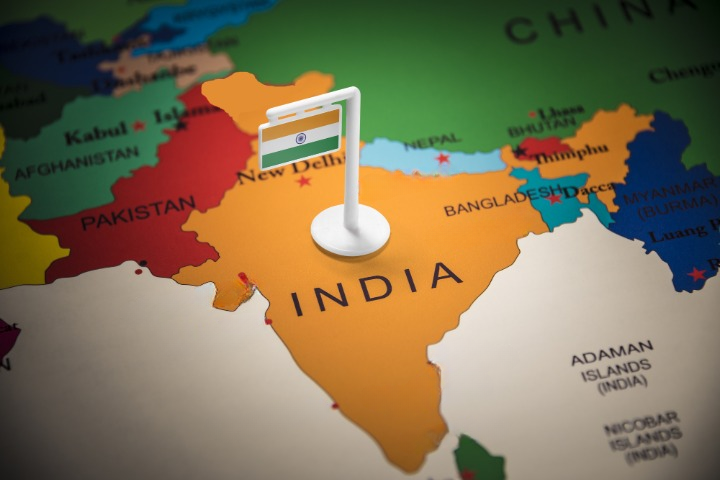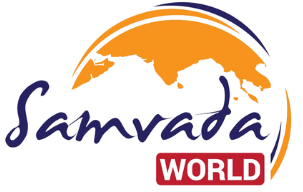
- India has always maintained a neutral or a central stance, while balancing its ties with the US, Russia, China, and also becoming a rising voice for the Global South.
- India strongly believes in maintaining its strategic autonomy, especially in a multipolar and unstable world.
- For long, India has been projecting itself as a voice for the developing Global South.
- India is emerging as a balancer in a multipolar, fragmented world, where it does not align fully with any bloc but maintains amicable ties with all of them.
Introduction
With conflicts like those between Russia-Ukraine, Israel-Gaza, and now Iran and Israel on the rise, the world is fragmenting. This portrays how the global institutions are weakening as they are unable to bring global peace and stability. With no one global power that is dominating the global order, multipolarity is at its rise. Smaller powers usually align with one of the other bigger powers in times of conflict. However, India has always maintained a neutral or a central stance, while balancing its ties with the US, Russia, China, and also becoming a rising voice for the Global South. India’s foreign policy strongly believes in strategic autonomy for the state, where India avoids getting involved in rigid alliances, and likes engaging in issue-based coalitions like QUAD, I2U2, BRICS, and SCO, to name a few. India’s approach has been pragmatic, which can be seen in its neutral UN votes, defence ties with Russia, and technological diplomacy with the West. However, the question that remains to be answered is whether India can retain its non-aligned and neutral stance in an increasingly divided world, given its leadership ambitions and strategic autonomy.
Understanding the Fragmenting World Order
Today, the world is divided into asymmetrical multipolarity—which essentially means that the world is not moving towards a balanced multipolarity but an asymmetrical one—where power is divided unequally among global powers. There is no doubt that the US influence is dying, but this hasn’t been replaced by a single power, which creates a fragmented and competitive landscape. There is also a rise in the influence of middle powers like Turkey, India, Brazil, and Indonesia, making the global order fluid and pluralistic. Moreover, multilateral organisations like BRICS, Quad, SCO, and AUKUS represent competing visions of global governance, creating parallel structures rather than unified global leadership. The Russia-Ukraine war or the recent conflict between Israel and Iran portrays the absence of a stable global security framework. India is often seen as a “swing power” whose choices can tilt balances, which gives it leverage, but at the same time, also increases the pressure to take sides.
If we look at the economic side of this, the use of sanctions and export controls as tools of foreign policy is on the rise. There can also be seen growing measures of restriction on critical technologies like semiconductors, AI tools, and energy supplies. There is also an increasing use of tariffs and non-tariff barriers globally. There can also be seen a shift away from global free trade toward self-reliance and strategic autonomy. Trends like friendshoring, nearshoring, and reshoring are gaining wider popularity. Amid this, India positions itself as an alternative manufacturing hub with Production Linked Incentive (PLI) Schemes.
India’s Strategic Posture: Autonomy or Alignment?
India strongly believes in maintaining its strategic autonomy, especially in a multipolar and unstable world. Recently, India has moved to a more nuanced policy of de-hyphenation, which involves engaging with countries bilaterally without being drawn into their rivalries. India’s foreign engagements are issue-based and non-exclusive, allowing for it to simultaneously participate in BRICS, QUAD, SCO, and IPEF. India also aims to project itself as a bridge between the Global North and South, which helps it seek leadership without aligning with a particular bloc.
India relies heavily on Russia for its defence infrastructure, and on Western partners for its growing economic-tech dependence. This is the reason that India remains equidistant and neutral between the two blocs. Critics call India’s non-alignment policy strategic indecision, while supporters have named it as hedging.
Projecting Power in the Global South
For long, India has been projecting itself as a voice for the developing Global South. It advocates for equitable global governance and reform of institutions like the UN and WTO. India also uses its soft power tools for diplomacy—development aid, capacity-building, vaccine diplomacy, and Digital Public Infrastructure (DPI)—for strengthening its relations with Africa, Latin America, and the Indian Ocean Region. India even used the G20 presidency of 2023 to amplify the Global South concerns, culminating in the inclusion of the African Union as a permanent member of the G20. India’s outreach is both normative (based on post-colonial solidarity) and strategic (counterbalancing China’s Belt and Road Initiative and expanding its influence). India aspires to cultivate an identity not just as a regional power, but as a civilizational state and development partner for the emerging world. However, India has a limited air budget and lacks large-scale infrastructure financing, which challenges India’s ability to compete directly with China or Western donors.
Security Role and Defence Posture
India’s threat perception changed after the 2020 Galwan Valley clash, due to which India has enhanced its military infrastructure and troop deployment along the Line of Actual Control (LAC). To counterbalance the role of China in the Indo-Pacific, India also actively takes part in QUAD, which promotes a free, open and inclusive Indo-Pacific. Indian Navy’s presence has also increased in the Indian Ocean Region (IOR). India strengthens its military partnership with various countries by regularly participating in naval exercises like MALABAR, MILAN, and RIMPAC. India also actively exports its defence equipment, like BrahMos missiles, to the Philippines. The Government of India is also pushing for ‘Atmanirbhar Bharat’ in the production of defence mechanisms, with the main emphasis on indigenisation and reducing import dependence.
Conclusion
India is emerging as a balancer in a multipolar, fragmented world, where it does not align fully with any bloc but maintains amicable ties with all of them. India highly values strategic autonomy and combines it with active diplomacy to maintain strong ties with the West, Russia, and the Global South. India positions itself as a norm-shaper, especially in the field of Digital Public Infrastructure, climate finance and inclusive multilateralism. India voices the concerns of the developing countries of the Global South and advocates for its reformed global governance through forums like the G20 and the Global South Summit. However, in a fragmented world, India’s future influence will depend on its ability to bridge divides, stabilise regions and set global agendas.
References-
- https://www.isdp.eu/publication/india-in-a-world-of-asymmetrical-multipolarity
- Sujith R. (2025). India’s Foreign Policy and Strategic Autonomy in a Changing Global Order. Journal of the Oriental Institute, 74(1), 306–313.
- Sisodia, H. S. & Seth, S. (2025, April). India’s Diplomacy in a Multipolar World: Analysing “Issue-Based Coalitions”. International Journal for Multidisciplinary Research, 7(2)
- https://www.nbr.org/publication/the-indian-model-for-digitalization-a-blueprint-for-the-global-south
- https://time.com/6311246/g20-summit-new-delhi-india-modi-global-south
- Ghosh, C. (2025, May). The paradigm shift of India from non-alignment to all-alignment post 2014: A case study of Indian foreign policy (Master’s thesis, Amity University)
Archita Gaur is a postgraduate student at the School of International Studies, JNU. She specialises in the World Economy and has a strong interest in public policy, economic research, and governance. The views expressed are the author’s own.
